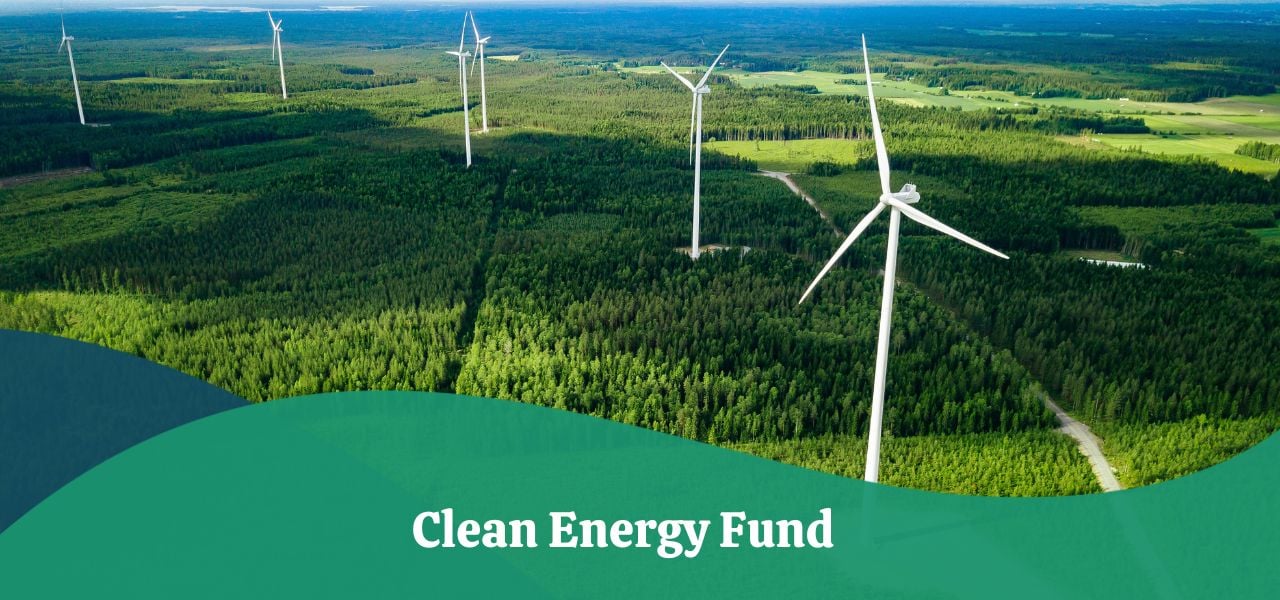


The renewable energy sector has emerged as one of the most dynamic and high-potential areas of investment in recent years. As the world intensifies its efforts to combat climate change and transition to cleaner energy sources, renewable energy has become central to both public and private sector strategies. Renewable energy funds, which pool investments in wind, solar, hydropower, and other clean energy projects, offer significant opportunities for investors seeking both returns and sustainable impact.
The momentum behind renewable energy is driven by several key factors, including government policies aimed at reducing carbon emissions, corporate commitments to sustainability, and significant technological advancements that have lowered the cost of renewable energy generation. As investment pours into renewable infrastructure, the growth potential for renewable energy funds continues to rise. This article explores the underlying drivers of this growth, the financial prospects of renewable energy funds, and the challenges and risks investors should consider.
One of the primary drivers behind the growth of renewable energy is the strong policy support from governments around the world. In 2015, the Paris Agreement set the stage for global climate action, with countries committing to limit global warming to below 2°C. These climate goals have resulted in national and regional policies aimed at decarbonizing economies and accelerating the adoption of renewable energy.
Many governments have committed to achieving net-zero carbon emissions by 2050, a target that requires massive investments in renewable infrastructure. These commitments are backed by substantial incentives, including subsidies, tax credits, and grants, which make renewable energy projects more financially attractive. In the US, the Inflation Reduction Act has unlocked significant federal funding for renewable projects, while Europe’s Green Deal is driving investment across the continent. In Asia, countries like China and India are also scaling up their renewable energy capabilities as part of their long-term energy security and environmental strategies.
These government policies are not only supporting the development of new projects but also encouraging the flow of capital into renewable energy funds, which pool investor money to finance large-scale solar, wind, and hydropower initiatives. The impact of these policies is expected to accelerate the growth of the renewable energy market over the next decade, providing a strong tailwind for renewable energy funds.

Corporations are also playing a significant role in driving demand for renewable energy. As part of their Environmental, Social, and Governance (ESG) initiatives, many companies are shifting towards renewable energy to power their operations and meet their sustainability targets. Global tech giants like Amazon, Apple, and Google have pledged to run their operations on 100% renewable energy in the coming years, prompting a surge in demand for clean power sources.
Corporate ESG mandates are aligning business models with sustainable practices, further accelerating investment in renewable infrastructure. Companies are committing to long-term power purchase agreements (PPAs) with renewable energy providers, which offer a stable and predictable revenue stream for renewable energy projects. These long-term contracts are an attractive feature for renewable energy funds, which can rely on consistent cash flows to generate returns for investors.
In addition to corporate demand, renewable energy is increasingly integrated into national grids as utilities transition away from coal and gas. This shift toward clean energy is driving steady, long-term demand, positioning renewable energy funds as a compelling option for investors seeking stable returns in the energy sector.
One of the most important developments in the renewable energy sector over the past decade has been the dramatic decline in the cost of renewable energy technologies. Solar photovoltaic (PV) panels, wind turbines, and battery storage systems have all become significantly more affordable due to advancements in manufacturing, efficiency, and economies of scale.
According to the International Renewable Energy Agency (IRENA), the cost of solar PV has fallen by over 80% since 2010, while the cost of wind power has dropped by 50%. As a result, solar and wind energy are now more cost-competitive with fossil fuels in many regions, even without government subsidies. This shift is making renewable energy more accessible and financially viable for both developed and emerging markets, further expanding the growth potential of the sector.
The declining costs of renewable technologies are a major driver of returns for renewable energy funds. As the cost of production decreases, the profitability of renewable projects increases, allowing these funds to generate higher returns for investors. Additionally, lower technology costs reduce the barriers to entry for new projects, expanding the pipeline of investable opportunities for renewable energy funds.
The financial performance of renewable energy funds has been strong in recent years, and the long-term growth potential of the sector suggests that this trend is likely to continue. As global investment in renewable energy infrastructure accelerates, renewable energy funds are well-positioned to deliver attractive returns for investors.
Renewable energy funds typically invest in a diversified portfolio of renewable projects, including wind farms, solar parks, hydropower facilities, and battery storage systems. These projects often operate under long-term power purchase agreements (PPAs) with utilities or government entities, which provide a stable and predictable revenue stream.This makes renewable energy funds an attractive option for income-seeking investors, as they offer consistent cash flows backed by contractual agreements.
Many renewable energy funds have delivered annualized returns in the range of 10-15% over the past decade, outperforming traditional energy funds and even broader market indices. As demand for renewable energy continues to grow and governments ramp up their climate commitments, renewable energy funds are expected to remain a compelling investment choice.
Several sectors within the renewable energy market are driving the growth of renewable energy funds. Solar power, wind energy, and energy storage are among the most promising areas for investment, each offering unique opportunities for long-term growth.
Solar energy is expected to play a dominant role in the global energy mix in the coming decades. The falling cost of solar PV technology, combined with its scalability, makes it an ideal solution for both utility-scale projects and distributed generation. The global solar market is projected to grow at a compound annual growth rate (CAGR) of 20% over the next decade, presenting significant opportunities for funds focused on solar infrastructure.
Wind energy, particularly offshore wind, is another high-growth sector. Offshore wind farms, which harness wind resources over the ocean, are expected to grow rapidly, especially in Europe, the US, and Asia. The offshore wind market is projected to grow by 25% annually, driven by government support and advances in turbine technology. Wind energy offers significant scalability, making it a key component of global renewable energy strategies.
Energy storage is emerging as a critical enabler of the renewable energy transition. As the share of intermittent renewable energy sources like solar and wind increases, energy storage systems are needed to ensure grid stability and reliability. Battery storage technologies, such as lithium-ion batteries, are becoming more efficient and affordable, creating new investment opportunities in this sector.
Electric vehicles (EVs) and charging infrastructure also represent a growing frontier for renewable energy funds. The rapid adoption of EVs is driving demand for clean electricity, while investments in EV charging infrastructure are creating opportunities for growth in the renewable energy space.
While the growth potential of renewable energy funds is undeniable, there are risks that investors should consider. One of the main risks is the reliance on government policies and incentives to support renewable energy development. Changes in political leadership or shifts in policy priorities could reduce the level of support for renewable energy projects, impacting the financial performance of renewable energy funds.
Supply chain disruptions are another risk facing the renewable energy sector. The production of solar panels, wind turbines, and battery components is highly dependent on global supply chains, and any disruptions due to geopolitical tensions, trade restrictions, or material shortages could delay project timelines and increase costs.
Technological risk is also a factor to consider. While advances in renewable energy technology have reduced costs and improved efficiency, the pace of technological change could create challenges for older projects. New technologies may emerge that outperform existing solutions, potentially impacting the competitiveness of older renewable projects.
Renewable energy funds offer a compelling investment opportunity, driven by strong government support, corporate demand, and declining technology costs. The financial performance of these funds has been impressive, and the long-term growth potential remains strong as the world transitions to a low-carbon economy.
By investing in renewable energy funds, investors can benefit from stable, long-term returns while contributing to the global effort to combat climate change. However, it is important to be mindful of the risks associated with policy changes, supply chain disruptions, and technological advancements. Overall, the outlook for renewable energy funds is bright, and the sector is poised for continued growth in the years to come.